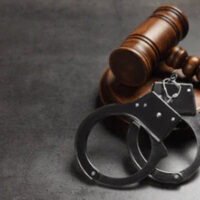How Much Faith Should Juries Put In Forensic Evidence?

Any crime drama aficionado can tell you that guilty verdicts often rest on the strength of forensic evidence. The case could be up in the air—until magically a fingerprint or a wayward strand of hair is discovered by a zealous detective. Instantly, it seems, the evidence is analyzed in the lab, proving beyond a shadow of a doubt who is guilty of the crime. The culprit goes to jail and justice is served. Just how accurate is this depiction of the criminal justice system at work? If you are being charged with criminal activity and there is forensic evidence that puts you at the scene of the crime, there are several things you should know.
Questions About Forensic Evidence
First of all, the time frame from when a crime is reported to the time it goes to trial is substantially longer than the hour it takes to resolve criminal issues on television. Furthermore, forensic evidence isn’t quite as cut and dried as it appears in the movies.
- Fingerprints: Believe it or not, the accuracy of fingerprint identifications haven’t really ever been tested. Incredibly, training standards for fingerprint analysts vary countrywide, and the majority of fingerprint “experts” have never been required to pass any sort of certification or testing standards. Conclusions reached by these specialists should be viewed as less than air tight in this light, to say the least. Even so, examiners are taught to report their findings with certainty. But the problems with fingerprint identifications is becoming more and more well-known, leading many courts across the country to exclude fingerprint evidence altogether!
- Hair analysis: The forensic analysis of hair has been under scrutiny of late as well—so much so that it is sometimes referred to as pseudoscience. Because so many of the characteristics of hair are very common, the likelihood of an accurate match is slim to none. According to The Guardian, one expert in the field noted that microscopic examinations are basically without value, except as a method to exclude a suspect.
Challenging “Expert” Testimony
When your defense team encounters what they consider dubious conclusions made by a supposed expert, Daubert Motions can be used to challenge the testimony based on any of three key areas:
- The qualifications of the individual providing conclusions;
- The methodology used to draw conclusions;
- The accuracy of the science itself.
These kinds of challenges give a judge reason to doubt the accuracy and legitimacy of this kind of testimony, and could benefit defendants by prompting a judge to give less weight to the testimony, to strike the testimony related to that evidence, or even to dismiss the case outright.
A Strong Criminal Defense
The Springfield criminal defense lawyers at Courtney & Mills look at every angle when crafting a legal defense strategy. If you are facing criminal charges, schedule a confidential consultation in our office today.
